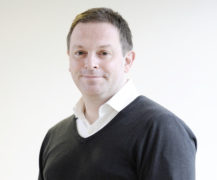Nothing defines Scottish state education so much as its conservatism. For a nation that prides itself on its spiky iconoclasm, it’s ironic that we seem to approach schooling our young with the trepidation of a trainee teacher on her first day in front of a rowdy class.
This does Scotland’s children no favours. Middle-class kids are, of course, more likely to have ambitious, supportive parents, expensive tutors and a focused learning environment. They will be fine – perhaps not as stretched as they should be, but they’ll get by. For those facing tougher odds, the story often has a less happy ending – they leave school with few meaningful qualifications, little hope of moving on to college or university, and struggle to secure a decent job.
Left to drift
Lockdown has only added to the barriers facing disadvantaged young people. They are less likely to have access to the kind of tech and wifi that enables effective home-schooling. They are more likely to live in a smaller house, without private space in which to concentrate. And for those in the worst conditions, that home life may involve abuse, alcoholism, lack of a healthy diet and continuous disruption.
Despite this, and despite a worrying run of research that shows Scotland’s education system is not performing as it should, and in some areas is even in decline, the stern-faced bureaucrats at the helm seem unbending. Whether they are protecting their own backsides or simply ideologically frozen, they resist reform and modernisation at every turn, reject all criticism of the status quo, and protect the producer interest ahead of the consumer – that is, pupils and parents.
Among those most wronged by this approach are children who may not be academically gifted – who may struggle with Higher Maths or Physics, say – but who have qualities and potential that would otherwise allow them to thrive. In our current one-size-fits-all comprehensive system these pupils often find themselves square pegs in round holes – dismissed as academically poor, they switch off and are left to drift towards adulthood, their horizons rapidly shrinking. But as we know, there are many different types of intelligence and many ways to be successful in the world.
This is the subject of a conference being staged on Thursday by my think tank, Reform Scotland. “Engaging the disengaged – alternative approaches to education” is an attempt to gather and explore examples of innovation that connect with and benefit pupils who are ill-suited to the traditional model.
Signs of hope
There are a number of independent projects led by inspiring social entrepreneurs who have taken it upon themselves to try to make a difference. The sailing is not always plain, the weather can veer towards the stormy at times, but they are building up a valuable store of evidence and experience that in a more courageous political climate would surely be put to use across the country.
One such project is Newland Junior College (NJC), set up in Glasgow by the businessman Jim McColl to meet the needs of young people who have a spark but who have been turned off by mainstream schooling. Over a five-year pilot programme, small groups worked to a curriculum with a reduced focus on academic study, an emphasis on vocational learning and a commitment to personal development. All those who completed the two-year course then went on to employment, an apprenticeship or a college course.
Sadly, and despite support from education secretary John Swinney, Glasgow City Council decided not to fund the project after the pilot period. However, McColl is now in conversation with other local authorities.
NJC is just one example. There’s the wonderful charity Inspiring Scotland, which through its Building Brighter Futures Fund helps disadvantaged young people find training and employment.
Our conference will also hear from CentreStage, set up in Kilmarnock in 2006 by two former teachers, which attempts to break through generational inequalities by providing sustained access to the arts. And there’s Scran Academy in Edinburgh, which provides skills for the food and drink industry to those at greatest risk of achieving low or no qualifications.
There are many more, working in communities across the length and breadth of Scotland to close the gaps in an education system that may be one-size-fits-all but that is certainly not fit for all.
The world is every day becoming more data-rich and more definable. As a result, we should know more about the diverse needs and potential of our young, and how to reach them. It cannot be beyond us – intellectually or morally – to do better.
Chris Deerin is a leading journalist and commentator who heads independent, non-party think tank Reform Scotland

